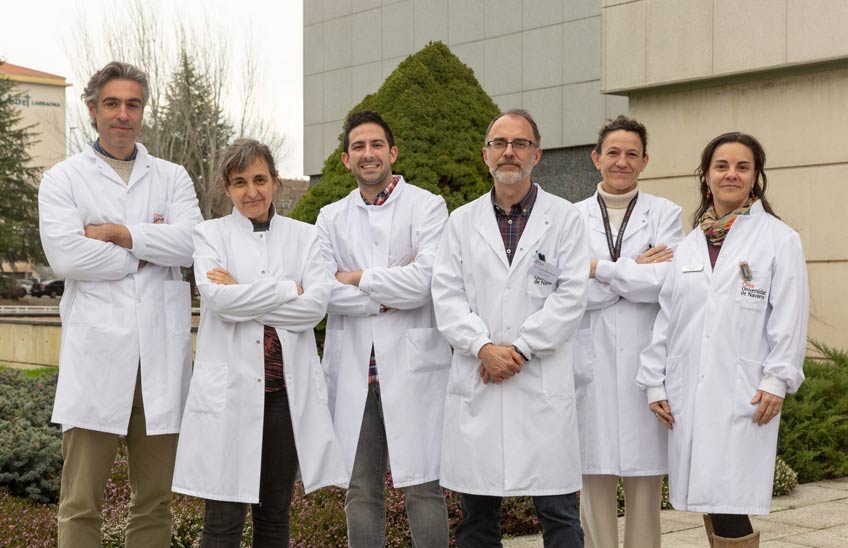A "switch" for safer gene therapy
Researchers at Cima University of Navarra identify an RNA that can be used to regulate the levels of a therapeutic gene depending on the response to treatment.

FotoManuelCastells
/Fernando Pastor, Puri Fortes, Eric Rovira, Rubén Hernández, Beatriz Moreno y Nerea Razquin
09 | 02 | 2024
Researchers at Cima University of Navarra have identified a ribonucleic acid (RNA) that could modulate gene therapy against cancer and other pathologies. These results guide the development of personalized treatments for each patient and at different stages of their disease.
Cells evolve to produce thousands of different RNAs that bind to proteins, DNA regions or other RNAs to perform different functions. For example, RNAs can contribute to the training of tumor cells. "Our study has been able to mimic this natural evolution at laboratory to identify synthetic RNAs that, when introduced into the cell, are able to control the expression of a therapeutic gene," explains Dr. Puri Fortes, director of the RNA Biology Program at Cima and co-director of the study with Dr. Fernando Pastor.
In general, therapeutic genes should always be beneficial to the patient. However, they sometimes cause unwanted side effects that lead to toxicity. Until now, it has been very difficult to modulate gene expression to prevent possible side effects. "At Cima we have identified an RNA sequence that acts as a regulator that modulates the expression of the therapeutic gene. Under normal conditions, when the therapy is introduced into the patient, the switch is turned off and the gene is not expressed, there is no effect," the researchers explain. "When the physician deems it appropriate, he will give the patient a conventional antibiotic. This will bind to the engineered RNA sequence and 'turn on' the gene to produce the therapeutic protein. If the physician or patient notices any unwanted effects, the antibiotic can be stopped and the gene will be turned off. If conditions change, the gene can be turned on again, using the antibiotic as many times as necessary," they explain.
One of the treatments that can benefit from this "gene switch" subject is CART, which consists of modifying these cells of the immune system so that they are capable of attacking tumor cells. "Sometimes CAR-T cells produce unwanted effects that would disappear with this strategy," say Drs. Fortes and Pastor.
The results of this work have been published in ACS Nanoa scientific journal of the American Society of Chemistry.
Applications in various therapies
One of the main conclusions of work is that it guides the clinician in applying the best approach for each case. As Dr. Pastor points out, "this RNA opens and closes in response to the antibiotic and allows us to regulate gene expression not only of CART but also of other therapies that at a given moment are overexpressed and cause collateral side effects".
The scientists see a very interesting application of this subject switch as the large-scale production of recombinant proteins for therapeutic purposes. "The switch would allow us to induce protein production at the optimal time to achieve the highest yield of therapeutic protein synthesis. In this line, future programs of study will be carried out at partnership with the Navarra-based recombinant protein producer 3P Biopharmaceuticals business ."
The study will now focus on determining the application of this system in various gene therapy approaches (both viral and non-viral) using different drugs available at the internship .
This work has been carried out at the framework of research center Biomedica en network (CIBER) and the Institute of research Sanitaria de Navarra (IdiSNA) and has been funded by the "la Caixa" Foundation, through the CaixaImpulse call.




